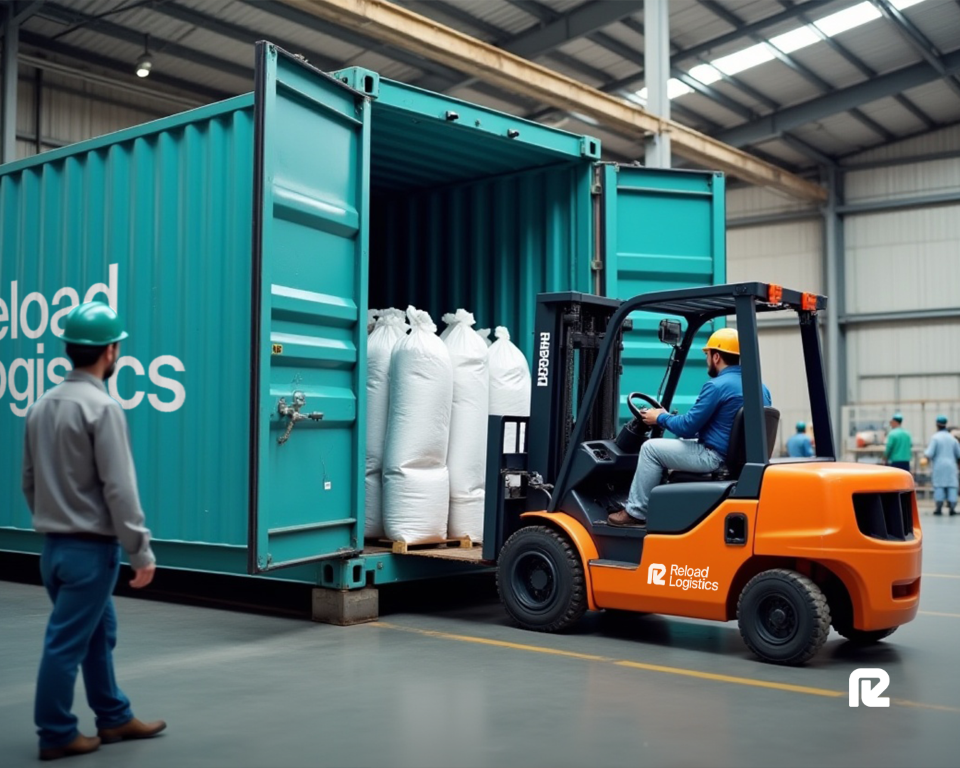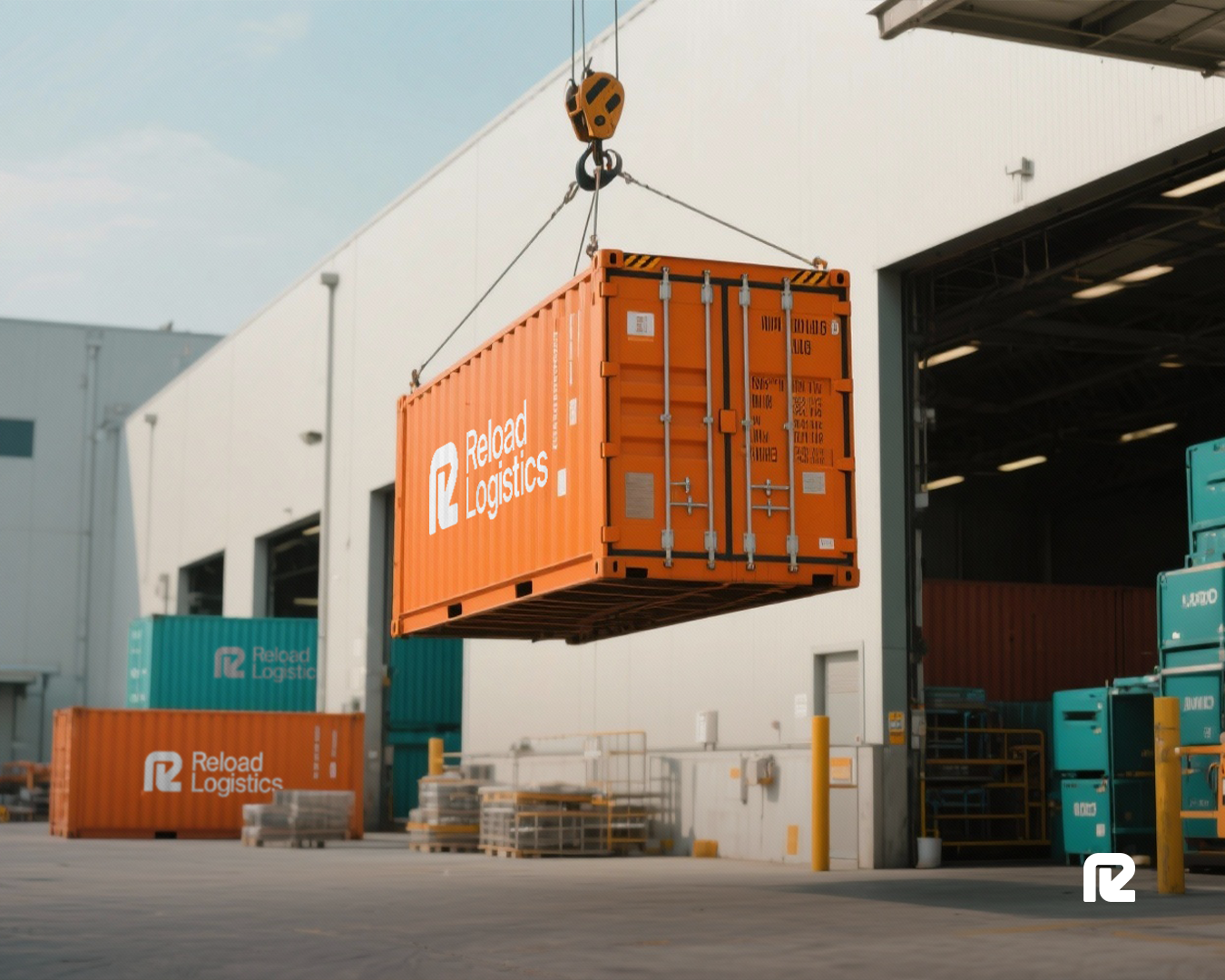Safe and Efficient Cargo Stuffing in Logistics


Efficient cargo stuffing is one of the more important aspects within supply chains, but can often be overlooked. This stage of the cargo journey is where all the planning, documentation, and equipment come together to protect the cargo in the best way to make sure it completes its journey safely and without damage.
Some areas in global logistics, like Southern Africa, can involve transport routes with complex multimodal plans, and long distances between ports and inland depots. In these circumstances container stuffing and de-stuffing require particular care, as any small oversights or mistakes can lead to costly damage, insurance claims, or delays in shipments.
This article will explore exactly what container stuffing involves, the necessary steps to complete the process, and the different container types.
What is Container Stuffing in Logistics?
In basic terms, cargo stuffing is the process of loading goods into a cargo container ready for transport either by road, rail, or sea. The focus of container stuffing is to ensure each cubic meter of container space is used efficiently, while maintaining balance, stability, and safety throughout the cargo journey. Heavy cargo is positioned at the bottom, lighter or fragile goods at the top, and sufficient space is left for air circulation or dunnage where needed.
Cargo stuffing involves a little more than the loading process, involving load planning, weight verification, moisture protection, and compliance with international standards, such as the SOLAS Verified Gross Mass (VGM) requirement.
Importance of Cargo Stuffing in Shipping
When cargo stuffing is performed efficiently it can positively directly impact many points along the supply chain, including:
• Reducing transport costs by optimizing container utilization.
• Preventing product damage from shifting, vibration, or compression.
• Streamlining customs inspections and clearance processes.
• Ensuring compliance with maritime weight and safety regulations.
However, if stuffing is inaccurate, it can lead to container imbalance and cause tipping, structural failure, and accidents during handling. It can also increase the likelihood of cargo claims, delays, and penalties due to overweight containers.
Types of Cargo Stuffing
There are three primary cargo stuffing methods, each suited to different supply chain models and cargo types.
Factory Stuffing
Performed at the manufacturers or exporter’s site, factory stuffing minimizes handling and potential contamination. This method is ideal for high-volume or sensitive exports like processed goods or raw minerals where speed and cargo integrity are priorities.
Dock Stuffing
Also known as port stuffing, this takes place at a Container Freight Station (CFS) or port terminal. It’s particularly useful for mixed or consolidated cargo that requires inspection before export. Some logistics providers will oversee dock stuffing for their clients to lower the risk of demurrage and loading delays.
Warehouse or Off-Dock Stuffing
This method occurs at a logistics provider’s facility, such as a bonded warehouse. It allows for palletizing, weighing, re-packaging, and moisture protection before containers are sealed. Off-dock stuffing is crucial for industries like mining, agriculture, and manufacturing, where shipments often require inspection and batching before export.
Bulk vs. Non-Bulk Cargo
Cargo stuffing procedures differ significantly based on whether the shipment is bulk or non-bulk.
Bulk Cargo: Includes such as minerals as they often require specialized handling equipment to load containers evenly without contamination or dust exposure.
Non-Bulk Cargo: Covers machinery, construction materials, and packaged goods. These typically involve forklift-assisted loading, wooden crating, or steel bracing to stabilize heavy components.
Commonly Stuffed Goods in Logistics
Some common examples of cargo that can be stuffed include:
• Mining and Industrial Equipment – requiring precision lifting, heavy-duty lashing, and route-verified loading plans.
• Agricultural Exports – bagged grains, tobacco, and sugar, which need moisture protection and ventilated containers.
• Project Cargo – oversized machinery or prefabricated structures needing open-top or flat-rack containers with reinforced support.
• Liquid Cargo – safely handled through flex tanks or sealed drums, depending on the commodity type.
Each category requires unique stuffing methods to ensure compliance with international safety and packaging standards.
The Process of Cargo Stuffing
Effective cargo stuffing begins with planning and inspection to make sure each step, from container selection to the final sealing, aligns with exactly what the specific type of cargo needs, as well as regulatory standards.
Before stuffing begins, teams assess:
• Cargo compatibility: Whether items can share space or need segregation.
• Weight verification: Confirmed under SOLAS to prevent overloading.
• Environmental protection: Use of liners or similar to prevent condensation and contamination.
• Documentation: Including cargo packing lists, and inspection certificates.
The Step-by-Step process of cargo stuffing looks like the following:
1. Inspect and prepare containers: Checking for rust, holes, and structural damage of the containers to make sure they are fit to travel and hold cargo safely.
2. Position cargo strategically: According to the stuffing plan, with the heaviest items centered over the container floor beams.
3. Apply lashing, bracing, and dunnage: To secure the load and prevent shifting and damage during transit.
4. Conduct weight and seal verification: Before issuing final documents and releasing them for transportation.
Cargo Stuffing Techniques
The way cargo is stuffed determines how well the cargo with withstand the physical stress of transit, the techniques applied during stuffing depend on the type of cargo:
• Palletization and shrink-wrapping for straightforward loads that handle easily.
• Crating and bracing for irregular, fragile, or larger machinery.
• Liners and moisture control systems for agricultural or bulk commodities.
• Multi-point lashing systems for heavy or long cargo pieces.
Container Selection for Cargo Stuffing
The type of container selected depends on the nature, size, and sensitivity of the cargo.
The most common container types used for cargo stuffing include:

Container selection also considers the conditions during transit, such as road conditions that can affect vibrations, humidity, and how frequent loading takes place, ensuring the equipment used during cargo stuffing matches the risk profile of the transit route.
Causes and Prevention of Common Cargo Damages
Even minor stuffing errors can have serious consequences once a container is on the move. Common causes of cargo damage include:
• Poor weight distribution, leading to imbalance and tipping.
• Inadequate bracing or lashing, allowing cargo to shift during transit.
• Moisture damage, especially in humid climates or coastal regions.
• Physical impact during loading and unloading operations.
Working with logistics partners can mitigate these risks as they perform detailed container loading plans on behalf of their clients.
Best Practices for Preventing Cargo Damage
Cargo safety depends on planning, skill, and the right use of equipment. Some best practices to avoid cargo damage include:
• Secure cargo stuffing: distribute weight and ensure firm contact between cargo and container walls.
• Proper packaging: use durable, moisture-resistant materials suitable for long transit durations.
• Weight distribution and stacking: heavy cargo should rest directly over the container’s cross-members to prevent floor damage.
• Use of dunnage and airbags: fill voids to prevent shifting.
• Lashing and bracing for stability: apply approved securing gear rated for the cargo’s weight and type.
To learn more about preventing damage of cargo and more in-depth best practices, read our dedicated article on the subject.
De-Stuffing Cargo Containers
Not only is stuffing containers correctly important for all cargo shipments, but de-stuffing, or the unloading process, is just as important. This part of the process involves careful unpacking, verification, and inspection upon arrival to confirm the condition of the cargo, as well as compliance with shipping documents.
Any signs of damage, moisture, or tampering should be immediately documented and reported for potential insurance purposes. After making these checks and going through the process of de-stuffing cargo, the container must be cleaned, inspected itself, and prepared for reuse. Often, containers are kept at a container yard or depot to await onward travel.
Reload’s Expertise in Safe and Efficient Cargo Stuffing
At Reload Logistics we are commited to delivering precise cargo stuffing and de-stuffing services, designed to protect shipments and optimize transport efficiency.
With experienced teams, modern handling equipment, and a deep understanding of Southern Africa's trade environments and transportation landscape, Reload ensures every container is safely packed, sealed, and documented.
Contact us to discuss how we can support your logistics efforts while optimizing your supply chains.
Frequently Asked Questions (FAQs)
What is cargo stuffing?
Cargo stuffing is the process of carefully loading goods into a container for transport, ensuring balance, space optimization, and cargo safety.
What is the difference between cargo stuffing and loading?
Stuffing involves the strategic planning and securing of cargo within a container, while loading refers to the broader act of placing goods onto transport vehicles or vessels.
What is cargo packing?
Cargo packing refers to the protective preparation of goods using suitable materials before they are stuffed into containers.
What is unstuffing in logistics?
Unstuffing, or de-stuffing, is the controlled unloading of goods from containers upon arrival, ensuring that the cargo remains intact and properly accounted for.
Categories





